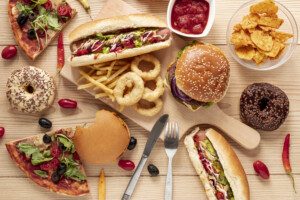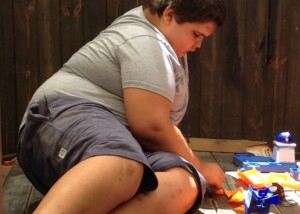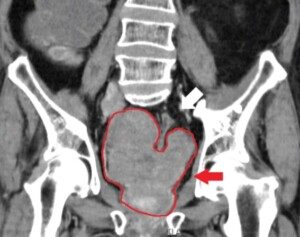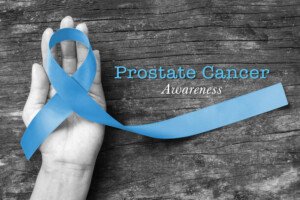A special needs woman doesn’t get to 302 pounds by accident and not without being overfed when growing up.
She now has medical problems that impair her quality of life.
“Kelcie” is only 30 and is already saddled with medical problems that no young adult should have to face.
I’ve been working with her for a while as a community connector, taking her out and about – that is, when one of her medical issues doesn’t make her feel so crappy that she cancels the outing.
Kelcie’s cognitive age is around eight. She weighs 302 and does not have a genetic disorder that makes her easily prone to morbid obesity.
It’s easy to connect the dots here. Kelcie was overfed growing up.
The excess ultra-processed food could’ve been used to make her feel better, to subdue her neediness, or as an expression of “extra love” that her parents gave her to compensate for her diagnoses of intellectual disability and autism.
Kelcie now suffers from several medical conditions that are significantly made worse by morbid obesity.
Instead of living a life filled with the socializing and activities she longs to do on more than a periodic basis, her calendar is replete with doctor appointments, tests and being made to stay home by her mother because she’s been (in her own texts) “throwing up all day.”
- Kelcie’s mother is a Medicaid funded family caregiver – receiving a monthly check from Medicaid to provide for her daughter from home.
- Additionally, Kelcie receives a Social Security Disability monthly check.
- In addition, her mother and stepfather both work full time.
There’s money in this house. Yet somehow, someway, her mother can’t find the money to pay for a basic gym membership for her morbidly obese daughter.
The only time Kelcie can go to a gym is when I or another community connector takes her, using the agency’s gym membership.
Her mother forbids her to be in the water out of an unrealistic fear she’ll get a urinary tract infection (pools are not a pathway through which one can get a UTI).
Mom forbids Kelcie to go to the local billiards center with a community connector where other special needs adults hang out for their day programs.
Mama believes the pool hall is full of rowdy bikers and unsavory characters.
I’ve been there several times and it’s about as tame as a bridge club at a church.
Mama also forbids any community connector to take her to a particular shopping mall because she thinks it’s unsafe (no more unsafe than any local Walmart).
So we have an overprotective, coddling type of mom who has no concept of how gravely Kelcie’s lifestyle is affecting her health and quality of life.
Uterine Fibroids = Severe Pelvic Pain
Kelcie has suffered from the debilitating pelvic pain of endometriosis (though recently it seems to be under control with a new treatment).
Obesity doesn’t cause endometriosis, but it can make it much worse.
Excess fat ramps up body-wide inflammation and pumps out hormones like leptin, which studies show can fuel the growth of endometriotic cells (Oh et al., Molecular Human Reproduction).
Plus, obesity harms fat metabolism in a way that activates an inflammatory pathway, which then causes uterine fibroids to grow even more (Nair et al., Frontiers in Nutrition).
Migraine Disorder
Kelcie suffers from migraine disorder. It has significantly interfered with day programs and has caused numerous cancellations.
Her symptoms have been head pain, feeling faint, numbness, nausea and vomiting.
Significant overweight doesn’t cause migraine disorder. However, it worsens the condition.
Excess fat tissue causes body-wide inflammation that leads to impaired gut function – leading to vomiting episodes “all day,” as in Kelcie’s words.
Migraines aren’t just about headaches and dizziness.
According to the American Migraine Foundation, the body releases pain-generating hormones because of its inflammatory state from obesity.
Now, when a migraine attack happens, there’s a similar production of these same pain-making hormones.
This adds insult to injury in people Kelcie’s size – that extra factor that ups pain levels, headaches and other problems from migraine disorder.
So that’s two medical conditions so far – endometriosis and migraine disorder – for which morbid obesity will jack up the symptoms in frequency and severity.
But there’s a third that’s been plaguing her.
Constipation
The 302 pounds increases abdominal pressure – actually compressing the intestines – impeding movement of feces, and also negatively influences gut hormones. The result? Constipation (BMC Gastroenterol, Silveira, et al)
Compounding this process is Kelcie’s inactivity and junk food, low-fiber diet.
And there’s one more…
Acid Reflux
Though Kelcie has not complained of this, it’s in her profile as a source of discomfort and symptoms.
Obesity has been well-established as not only a cause of chronic acid reflux, but an aggravator if it has another chief driver or if someone has always had it but then gains weight.
It’s Not Believable
It’s not believable that if Kelcie had been encouraged to eat healthfully with controlled portions as a youngster, and if her parents had gotten her involved in athletics or at least made physical activity an integral part of the family lifestyle (e.g., hiking), that these conditions would still be impacting her so hard in her young adulthood.
And by golly, I forgot to mention the knee problem, which she has claimed can “give out” and make her fall.
Logic 101 dictates that if obesity isn’t the cause of Kelcie’s knee arthritis, then certainly, the surplus 150 pounds are making the disease so much worse.
All of these ailments are just WAY TOO MUCH for someone who’s only 30.
I’m not saying that a normal-weight body would’ve prevented all of these conditions.
In fact, my normal-weight niece, who regularly exercises and played a sport in college, suffers from migraine disorder.
But certainly, if we add 150 pounds to her, you can bet your life savings that her condition would get much uglier.
Kelcie has chronic conditions, and her lifestyle, at a minimum, just makes them worse.
What a shame that she was allowed so much food access in childhood.
Come on, we can’t deny this, based on what we know of her mother. I’ve also seen how much Kelcie eats.
Moms of kids with intellectual impairments often feel an intense need to show love and care through food.
In a 2025 Journal of Intellectual Disability Research study by Curtin et al., parents of intellectually disabled kids were more likely to use food to regulate their child’s emotions.
They’d offer snacks or treats not just for hunger — but to soothe or cheer the child, especially when upset or stressed.
This parental behavior is actually commonly seen with parents of even typical kids in wealthy countries such as the U.S.
Imagine how much more apt moms and dads will be to use food as a shortcut for love or an easy fix for a stressful moment, when the child’s mental age is younger than their chronological age or has communication difficulties.
I don’t know how “difficult” Kelcie was as a child or teen. I DO know that she’s a pretty easy individual to work with – when she’s not constantly complaining of head pain, dizziness, feeling faint, nausea, feeling like she’s going to throw up, expressing fear that she’ll fall if she rises from a toilet seat, and on and on.
I can’t help but think, “Her mother did it to her,” referring to the significant abdominal obesity.
A lifestyle of inactivity and overconsumption of ultra-processed foods is so locked into Kelcie that there is just no hope of her ever losing enough weight through portion control and exercise alone to make a big positive difference on her health and quality of life.
Portion control and a regimented workout program require a cognitive bandwidth that she doesn’t possess.
Sure, intervention from the adults in her life could make it happen, but neither her mother or stepdad (bio dad isn’t in the picture) are insightful enough to “unteach” such an unhealthy lifestyle.
Other relatives are just not present enough to be influential.
Nevertheless, I believe it’s possible that Kelcie’s mother has some regrets about letting her daughter get so fat.
Kelcie has told me, “My mama wants me to lose weight.”
But it’s not going to happen without a GLP-1. Her mother gives her $20 and she’ll spend it on junk food. I don’t know what she eats at home, but I’ve seen her overeat.
How do we control what she buys when her parents aren’t with her? I say nothing. That’s not my job.
But to maintain 302 pounds, Kelcie has to be getting her hands on a lot of food daily.
A 30-year-old should be hiking, roller skating, dancing, running, and feeling great every morning when she gets out of bed, instead of worrying when she’ll next be puking and having to cancel day programs to go to doctor appointments.
![]()



























